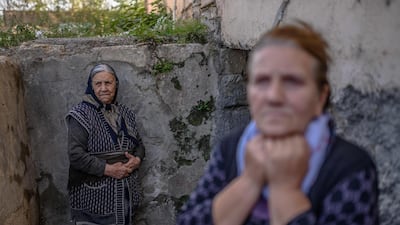For nearly three weeks, Azerbaijan and Armenia have been embroiled in clashes in Nagorno-Karabakh, a region disputed by the two nations. It is the latest flare-up in a decades-long conflict that recently had seemed to be in a period of remission. Now events are threatening to destabilise the South Caucasus. The clashes have claimed hundreds of lives and exacerbated tensions during a period already scarred by a global health crisis and economic recession.
Officially known as Nagorno-Karabakh but referred to as Artsakh in Armenia, the region is recognised by most nations as Azerbaijani territory, but it is mostly inhabited and governed by ethnic Armenians. After the fall of the Soviet Union, the region declared its independence in 1991, a move recognised by neither Azerbaijan nor Armenia, though the latter supports the separatists financially and militarily. In the following three years, when the worst of the fighting took place, 30,000 people perished.
Last Saturday, both sides implemented a Russian-brokered ceasefire, but they each has since accused the other of violating it. Now, a humanitarian crisis looms.
Hundreds of Armenian and Azerbaijani soldiers have died on the frontlines, and scores of civilians have been killed. The number of casualties has not been independently verified and in reality may be much higher. Photographs of elderly people sweeping the rubble of their destroyed homes in the disputed region have been circulated widely. They have come to symbolise the suffering of thousands of innocent civilians caught in a seemingly endless conflict.
Azerbaijanis and Armenians alike were already suffering from the coronavirus pandemic and its economic consequences. Now, they must also worry about the potential of full-blown war if the ceasefire falls through.
Charities on the ground are already preparing for the worst. This week, the International Committee of the Red Cross issued a $10 million emergency appeal to bolster its humanitarian efforts in the region. The violence has also caused a spike in coronavirus cases on both sides of the border. In Armenia, the total number of active Covid-19 cases has more than doubled since fighting began, and Azerbaijan has also recorded a surge in cases.
Turkey has taken an active role in the conflict. Ankara has openly sided with Azerbaijan, encouraging Baku to continue fighting and drawing both sides further away from the negotiating table. Having already sent Syrian mercenaries to fight in Libya, Turkey has now flown Syrians to fight as proxies in Azerbaijan. At least 50 of them have died in the conflict.
Turkey has embroiled itself in conflicts throughout the region. It has provided support to Libya’s Government of National Accord. Ankara has also increased its influence in Lebanon and encroached on the maritime boundaries claimed by Greece and Cyprus. This expansionist pattern is hindering peace efforts in multiple zones of conflict.
As diplomatic talks in Nagorno-Karabakh have so far failed to provide a satisfactory solution, war is now being touted as the only option. But armed conflict seldom ends political problems. On the contrary, it deepens the existing predicament at the expense of civilians.
Armenia and Azerbaijan would do well to respect the ceasefire they both agreed to last week and work towards ending hostilities in Nagorno-Karabakh diplomatically. The cost, in humanitarian terms, of pursuing any other course of action is simply too great.


